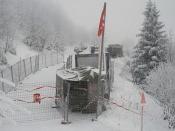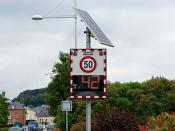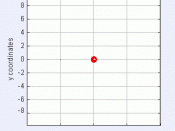BASIC RADAR, SONAR, & DOPPLER THEORY
RADAR
The term RADAR is an acronym made up of the words radio detection and ranging. In today's society radar plays an important part of our every day lives. Thousands of lives rely on the accuracy and speed of radar to guide their plane through the skies unscathed. Radar is also used to provide us our daily weather report and forecast. While radar is taken for granted in our daily lives, it is a relatively new concept. Early versions of radar systems were first put into use shortly after the beginning of World War II.
The principle on which radar works is relatively simple and very similar to reflections of sound waves, echo, a phenomenon many of us have experienced. In an echo, a sound is sent out in all directions. When the sound waves find an object, such as a cliff face or bottom of a well, they will bounce back to the source of the echo.
One of the primary commercial and military uses of radar is ranging. Technique of calculating range based on radar data is quite simple. We know electromechanical (EM) energy radiated from a radar system travels at approximately 984 feet per microsecond, and we know that a nautical mile is 6,080 feet. Therefore, we can calculate using the formula 6,080 feet divided by 984 feet per micro-second equals the time it takes for EM energy to travel one nautical mile, 6.18 microseconds, or, 6,080/984 = 6.18 ms. Keep in mind, however, that in order for the time to be calculated, the energy also has to return that same distance back to the radar receiver. So we can say- the time required for energy to travel one mile and return is 12.36 ms. This 12.36 microsecond interval is referred...



Hmmm
im not sure i completly understand this essay. maybe im a little simple, or whatever but it seems really complicated. maybe you could explain it to me sometime.
1 out of 1 people found this comment useful.